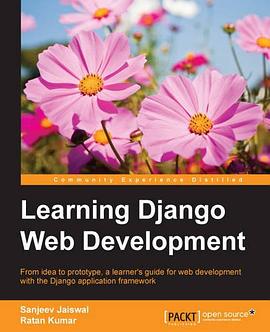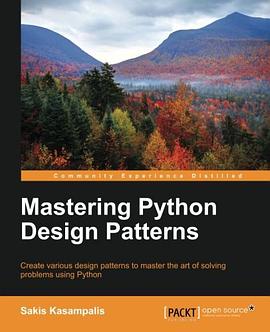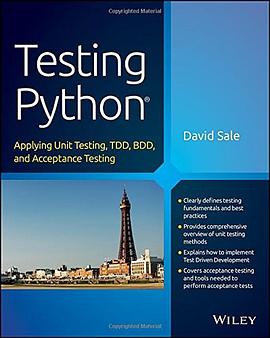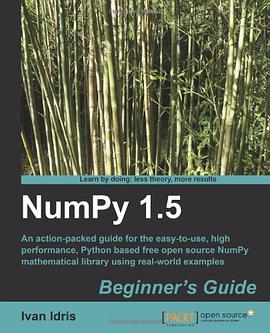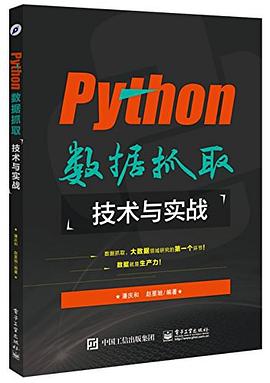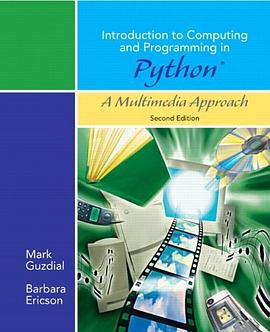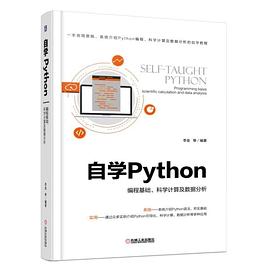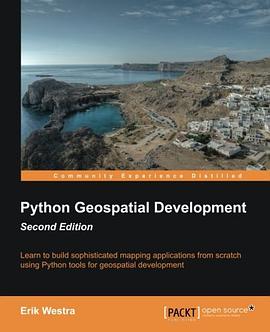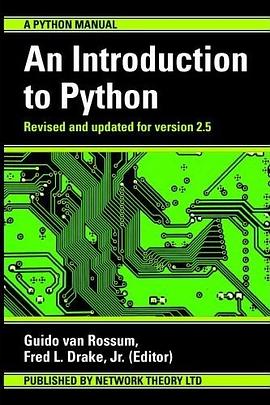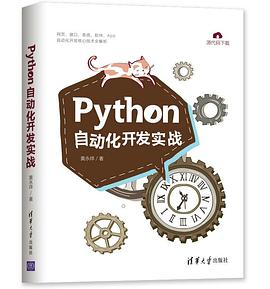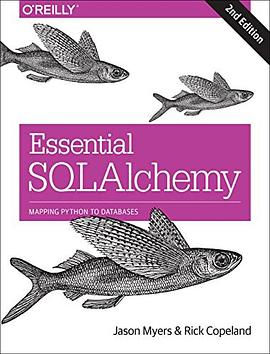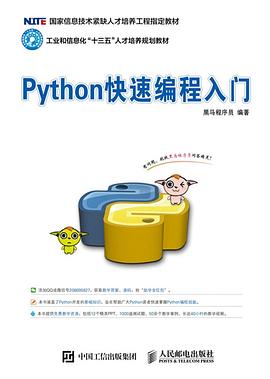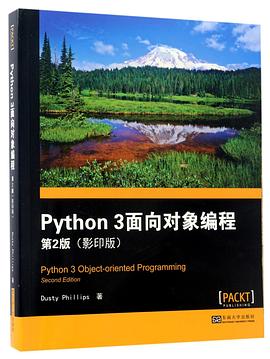

具体描述
作者简介
Dusty Phillips,is a Canadian software developer and author currently living in Seattle, Washington. He has been active in the open source community for a decade and a half and programming in Python for nearly all of it. He cofounded the popular Puget Sound Programming Python meetup group; drop by and say hi if you're in the area.
目录信息
Chapter 1: Object-oriented Desiqn
Introducing object-oriented
Objects and classes
Specifying attributes and behaviors
Data describes objects
Behaviors are actions
Hiding details and creating the public interface
Composition
Inheritance
Inheritance provides abstraction
Multiple inheritance
Case study
Exercises
Summary
Chapter 2: Objects in Python
Creating Python classes
Adding attributes
Making it do something
Talking to yourself
More arguments
Initializing the object
Explaining yourself
Modules and packages
Organizing the modules
Absolute imports
Relative imports
Organizing module contents
Who can access my data?
Third-party libraries
Case study
Exercises
Summary
Chapter 3: When Objects Are Alike
Basic inheritance
Extending built-ins
Overriding and super
Multiple inheritance
The diamond problem
Different sets of arguments
Polymorphism
Abstract base classes
Using an abstract base class
Creating an abstract base class
Demystifying the magic
Case study
Exercises
Summary
Chapter 4: Expecting the Unexpected
Raising exceptions
Raising an exception
The effects of an exception
Handling exceptions
The exception hierarchy
Defining our own exceptions
Case study
Exercises
Summary
Chapter 5: When to Use Object-oriented Programming
Treat objects as objects
Adding behavior to class data with properties
Properties in detail
Decorators - another way to create properties
Deciding when to use properties
Manager objects
Removing duplicate code
In practice
Case study
Exercises
Summary
Chapter 6: Python Data Structures
Empty objects
Tuples and named tuples
Named tuples
Dictionaries
Dictionary use cases
Using defaultdict
Counter
Lists
Sorting lists
Sets
Extending built-ins
Queues
FIFO queues
LIFO queues
Priority queues
Case study
Exercises
Summary
Chapter 7: Python Object-oriented Shortcuts
Python built-in functions
The len() function
Reversed
Enumerate
File I/O
Placing it in context
An alternative to method overloading
Default arguments
Variable argument lists
Unpacking arguments
Functions are objects too
Using functions as attributes
Callable objects
Case study
Exercises
Summary
Chapter 8: Strings and Serialization
Strings
String manipulation
String formatting
Escaping braces
Keyword arguments
Container Iookups
Object Iookups
Making it look right
Strings are Unicode
Converting bytes to text
Converting text to bytes
Mutable byte strings
Regular expressions
Matching patterns
Matching a selection of characters
Escaping characters
Matching multiple characters
Grouping patterns together
Getting information from regular expressions
Making repeated regular expressions efficient
Serializing objects
Customizing pickles
Serializing web objects
Case study
Exercises
Summary
Chapter 9: The Iterator Pattern
Design patterns in brief
Iterators
The iterator protocol
Comprehensions
List comprehensions
Set and dictionary comprehensions
Generator expressions
Generators
Yield items from another iterable
Coroutines
Back to log parsing
Closing coroutines and throwing exceptions
The relationship between coroutines, generators, and functions
Case study
Exercises
Summary
Chapter 10: Python Design Patterns I
The decorator pattern
A decorator example
Decorators in Python
The observer pattern
An observer example
The strategy pattern
A strategy example
Strategy in Python
The state pattern
A state example
State versus strategy
State transition as coroutines
The singleton pattern
Singleton implementation
The template pattern
A template example
Exercises
Summary
Chapter 11: Python Design Patterns II
The adapter pattern
The facade pattern
The flyweight pattern
The command pattern
The abstract factory pattern
The composite pattern
Exercises
Summary
Chapter 12: Testing Object-oriented Programs
Why test?
Test-driven development
Unit testing
Assertion methods
Reducing boilerplate and cleaning up
Organizing and running tests
Ignoring broken tests
Testing with py.test
One way to do setup and cleanup
A completely different way to set up variables
Skipping tests with py.test
Imitating expensive objects
How much testing is enough?
Case study
Implementing it
Exercises
Summary
Chapter 13: Concurrency
Threads
The many problems with threads
Shared memory
The global interpreter lock
Thread overhead
Multiprocessing
Multiprocessing pools
Queues
The problems with multiprocessing
Futures
AsynclO
AsynclO in action
Reading an AsynclO future
AsynclO for networking
Using executors to wrap blocking code
Streams
Executors
Case study
Exercises
Summary
Index
· · · · · · (收起)
读后感
内容:一位python初学者,知道python语法,会用python写比helloworld复杂一些的代码,就可以看这本书了。这本书循循善诱,教如何用python进行面向对象编程,方法很Pythonic,而不仅仅是python的class。每一章后面的案例也是蛮有意思的。讲解的过程中会把每一次改进用黑...
评分内容:一位python初学者,知道python语法,会用python写比helloworld复杂一些的代码,就可以看这本书了。这本书循循善诱,教如何用python进行面向对象编程,方法很Pythonic,而不仅仅是python的class。每一章后面的案例也是蛮有意思的。讲解的过程中会把每一次改进用黑...
评分这本书花了不到2天时间看过第一遍。可能是面向对象的主题原本就不好写,我从书中得到的并不是很多,它的面向对象知识没有《Python核心编程》写的详细,设计模式没有《精通Python设计模式》说的好,而测试、多线程等的章节,基本可以忽略...... 硬件方面,书的印刷纸张并不好。 ...
评分首先要说的就是,这本书我还没读完。但是忍不住要写一下感想。 这本书从定位上是Python的一本进阶书籍。当你对Python有了一定的基本了解以后,想深入学习下Python的面向对象特性,那么可以读此书。我当时就是抱着这种想法找到了这本书。然而读了五六章后发现,这尼玛觉不是简...
评分首先要说的就是,这本书我还没读完。但是忍不住要写一下感想。 这本书从定位上是Python的一本进阶书籍。当你对Python有了一定的基本了解以后,想深入学习下Python的面向对象特性,那么可以读此书。我当时就是抱着这种想法找到了这本书。然而读了五六章后发现,这尼玛觉不是简...
用户评价
2019年已读008:最后四章暂时没看
评分写得啰嗦,不清晰,口语化,最后三章实在无法忍受看不下去了
评分写得啰嗦,不清晰,口语化,最后三章实在无法忍受看不下去了
评分写得啰嗦,不清晰,口语化,最后三章实在无法忍受看不下去了
评分写得啰嗦,不清晰,口语化,最后三章实在无法忍受看不下去了
相关图书
本站所有内容均为互联网搜索引擎提供的公开搜索信息,本站不存储任何数据与内容,任何内容与数据均与本站无关,如有需要请联系相关搜索引擎包括但不限于百度,google,bing,sogou 等
© 2025 book.quotespace.org All Rights Reserved. 小美书屋 版权所有

